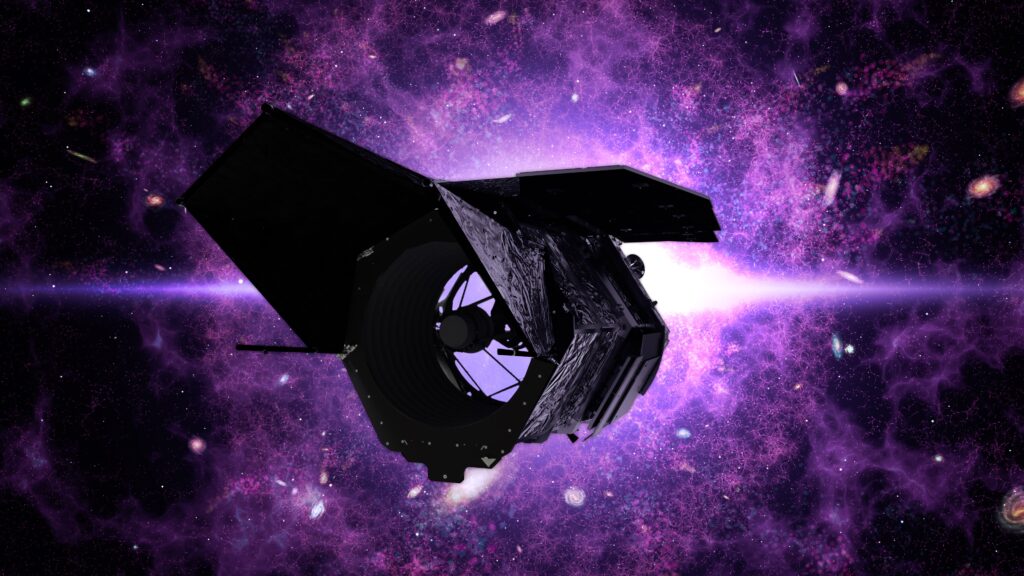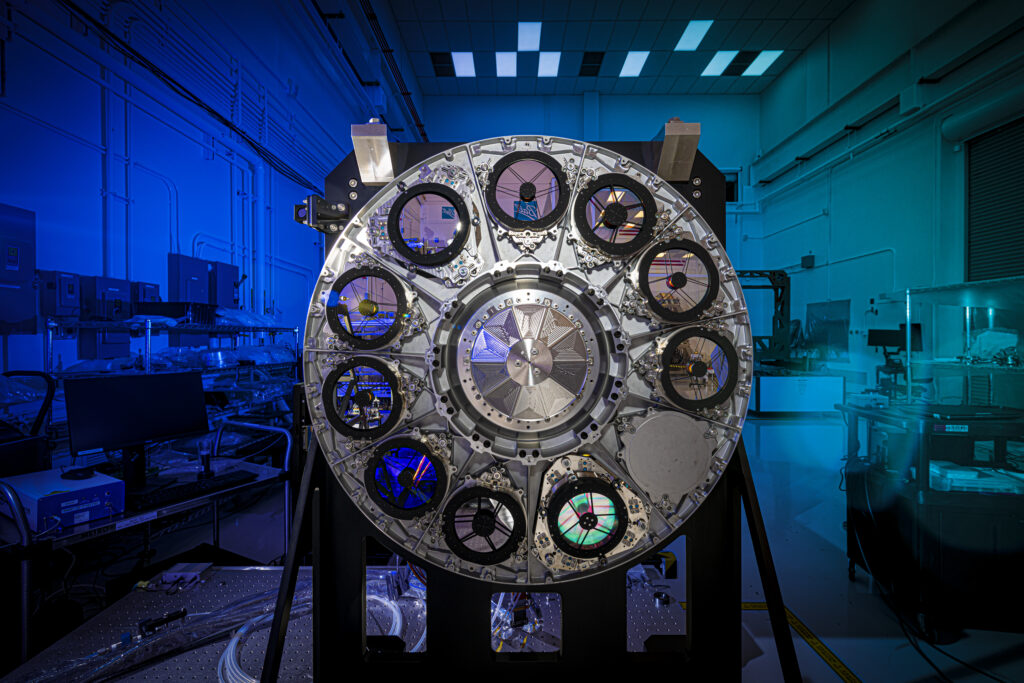Ball Aerospace engineers have completed the installation of a wheel with filters on a 288-megapixel WFI (Wide Field Instrument) camera. This is the main scientific instrument of the new Roman Space Telescope, which will allow it to lift the veil of mystery over some of the most mysterious astronomical events.
NASA’s New Telescope
The Roman Space Telescope is designed to observe large-scale structures of the Universe and study the influence of dark matter on galaxies. Another mission objective is to search for and obtain direct images of exoplanets.

Like the famous Hubble, Roman will be equipped with a 2.4-meter mirror, which will allow it to take pictures with similar detail. At the same time, there are a number of significant differences between the two space observatories. Unlike Hubble, Roman is designed for near-infrared observations. Another important difference is the WFI. This camera will be able to shoot sections of the sky with an area of 0.28 square degrees, which is a hundred times larger than the field of view of the Hubble telescope.
WFI Camera Mechanism
The wheel of the WFI camera captured in the presented image is equipped with eight filters, each of which can transmit light only of a certain wavelength. They will vary depending on the purpose of the observations.

In addition to filters, an “empty” element is installed on the wheel (it is necessary for calibration), as well as a grism and prism. These are spectroscopy instruments designed to separate light into different colors. Spectrum analysis allows to find out the chemical composition of various bodies, as well as determine their other characteristics. So, astronomers will be able to determine the directions of motion and speeds of thousands of galaxies, which will allow them to understand how quickly the Universe expands at different points in time. In turn, this will help determine the nature of dark energy.
The grism and prism installed on Roman already passed a series of cryotests, during which they were cooled to a temperature of -123 °C. Tests have confirmed their stated characteristics.
At the moment, the launch of Roman is scheduled for May 2027. A Falcon Heavy rocket will be used to launch the telescope into orbit.
According to https://www.nasa.gov
Follow us on Twitter to get the most interesting space news in time
https://twitter.com/ust_magazine

